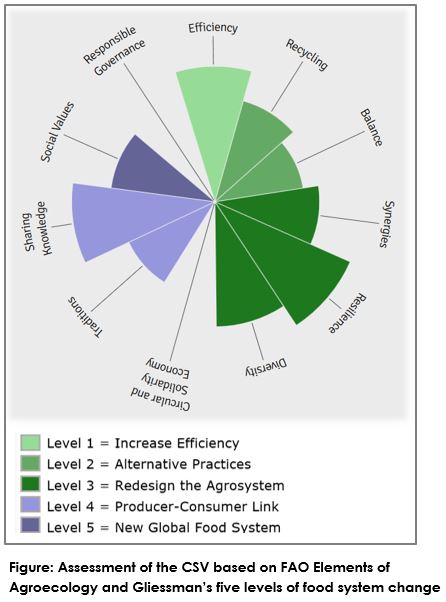Category:
![]()
Implementing Organisation:
CCAFS and CGIAR
Period:
2011 – now
In a nutshell

CSV aims to generate evidence at local scales of what climate-smart agricultural options work best, where, why, and how. They use this evidence to distil lessons learned for policy makers, agricultural development practitioners and investors from local to global levels.
The main goal is to contribute to food and nutritional security and poverty reduction under climate change. Where possible, the programme also aims at reducing GHG emissions.
On a local scale CSV helps smallholder farmers to adapt their agricultural practices to secure reliable food supplies and livelihoods. For this purpose CSV advises to rear local breeds of goat and sheep and diversify crop varieties.
Context
The project was launched in 2011 with 15 climate-smart villages in West Africa, East Africa and South Asia. Additional villages joined in 2014 in Latin America and Southeast Asia.
All the villages are situated in high-risk areas, which will likely suffer most from a changing climate. Villages are also locations where local partners have already established vital links with communities.
Objective
CSV wants to understand the effectiveness of CSA options (practices, technologies, services, programs, and policies) to enhance productivity, raise incomes and to build climate resilience. Furthermore, the programme tests and identifies successful adoption incentives, finance opportunities, institutional arrangements and scaling out/up mechanisms.
Key Interventions/Research
Farm level:
- Introducing new breeds of small ruminants (sheep and goat) which are more resilient to drought and disease (Galla Goat, Red Maasai Sheep)
- Drought tolerant varieties of maize and sorghum
- Diversifying crops to be more resilient (drought, diseases): Cassava that resists the deadly mosaic virus, sweet potatoes that are better adapted to low moisture in the minor season, tissue culture bananas that resist the bacterial wilt disease
- Introducing Mangoes as well as pawpaw trees to diversify diet and livelihood
- Strategic grazing management
Regional/national Level:
- Mainstreaming climate change into national agriculture plans
- Participatory action research to improve a variety of crops
- Consultative meetings with a range of stakeholders to raise awareness of climate change
- Establishing of learning sites in various regions of the participating countries
- Supporting women and youth primarily by utilizing transformative approaches to empower women and communicating via social channels
- Implementation of an index-based insurance scheme
Lessons Learned/challenges
The practices of CSV, like water management or mitigation options, have not been adapted in some regions. One factor that contributes to low uptake of new technologies is that development practitioners lack evidence of how the innovations can be practically incorporated into agricultural systems. They need to know how farmers can achieve synergies and minimize trade-offs in implementing multiple interventions on real farms. Climate change complicates this because its impacts will vary across locations. Effective implementation therefore requires an integrated approach in which science, technology, and decision making interact with local socioeconomic conditions and culture.
Relevant Links & references
- CCAFS and CGIAR: “Climate-smart villages”
- Ecology and Society: “The climate-smart village approach: framework of an integrative strategy for scaling up adaptation options in agriculture”
